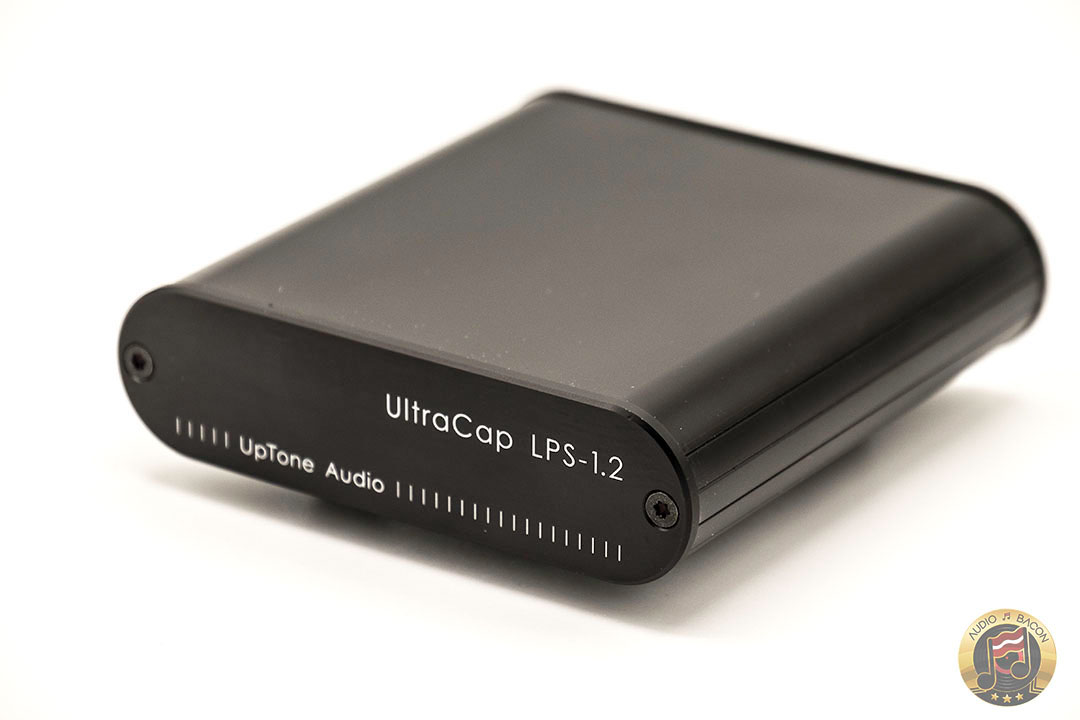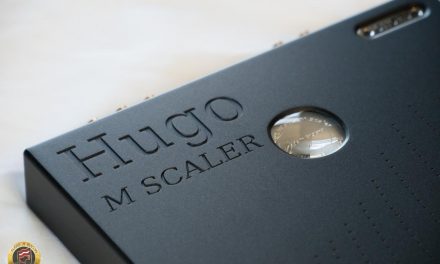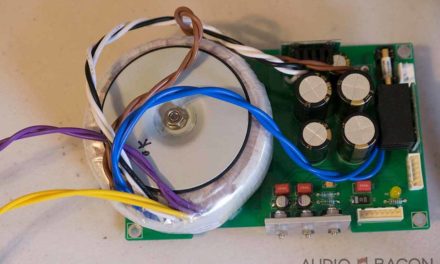I have an older HDPlex 400W power supply and thought it sounded pretty good. So I purchased HDPLEX’s 300W power supply a few weeks ago. Came out to $585 for a quad-rail power supply – which isn’t bad considering others are charging more than double for a single rail.
I have linear power supplies for pretty much every component in my system, including my modem, router, and network switches. I don’t think any audiophile would argue that clean power and better isolation are essential for a more “live” and analog listening experience.
I’m planning to compare a few high-end linear power supplies soon and will be testing them with a variety of components. To name a few, I have a custom server, Intel NUC, SOtM switch, laptop, and the JCAT USB Xtreme PCI card – which I think uses a similar regulator on the HDPlex power supply. Many audiophiles will use one for their Raspberry Pi, squeezeboxes, and other streamers.
Features
- No fans, fins are great for dissipating heat.
- Transformers: Transformers are used to step up or down the voltage from your mains. We would take 120 volts AC and convert them to 12V, 19V AC, etc.
- This HDPLEX has a 300W R-core transformer. R stands for rectangular. R-core transformers are less noisy due to less capacitive coupling between the primary and secondary sides. For that reason, they’re also used in a lot of medical equipment.
- The windings actually cancel each other’s magnetic flux which keeps leakage flux to a minimum. They also have better efficiency versus toroidal transformers which require more shielding.
- Rectifier: This is where we convert from AC to DC.
- Under this aluminum heatsink, we have 15A Rochester Electronic Shot key rectifier diodes. Their job is to essentially take the absolute value of the AC signal.
- These specific rectifiers have fast switching and a low forward voltage drop. I think 700mV. So it’s very efficient. But the power still isn’t usable here. There’s still some voltage ripple.
- Filter Capacitors: To smooth and stabilize out the ripples from the rectifier, we have filter capacitors. Its job is to keep the voltage more steady.
- These are high-quality Japanese 10000 micro-farad ELNA audio grade electrolytic capacitors. One for each rail to help eliminate potential phase distortion.
- Linear Regulator: At this point, the output voltage can still vary due to load, capacitance, and input voltage across the transformer. We want the DC output voltage to be stable.
- This HDPlex power supply uses 12 Linear Tech LT3045 regulators. These are ultra-low noise, low dropout linear regulators. So better efficiency, less heat, and a high power supply rejection ratio. These are obviously great for noise-sensitive applications such as audio.
- They work in conjunction with ST Microelectronics high-power NPN BJTs.
Popular Power Supplies
- HDPlex – https://hdplex.com
- JCAT – https://jcat.eu/
- UpTone Audio – https://uptoneaudio.com/
- Sbooster – https://www.sbooster.com/
- Mojo Audio – https://www.mojo-audio.com/
- Wyred4Sound – https://wyred4sound.com/
- Farad Power Supplies – https://faradpowersupplies.com/
- Ciunas Audio – https://www.ciunas.biz/
- Allo – https://www.allo.com/
- Sean Jacobs – https://www.custom-hifi-cables.co.uk/
- Keces – https://www.kecesaudio.com/
- LexiCone Acoustics – http://www.lexicone.nl/
- Fidelizer Audio – https://fidelizer-audio.com/
Let me know in the comments below which power supplies you want to see compared. Make sure to hit that bell so you’ll be the first to be notified when the review drops.









Paul Pang, Paul Hynes, HD Plex 300W (which is the one I am interested in because of the 4 rails), Fidelizer, Sean Jacobs, and Farad.
Hi Jay,
Have you thought about adding the Ferrum Hypnos power supply? That would be awesome!
https://ferrum.audio/
Will try to get it in!
You forgot the new comer : Ferrum Hypsos psu
Hi Jay,
It would be great if you would include the Ferrum Hypsos in your comparison. Thank you!
https://ferrum.audio/
Jay,
Thank you for your great reviews and comparison testing. I find your comparison tests to be particularly informative since you are better able to describe the subjective benefits of one product versus others when having something to compare to.
Power supplies that would be of most interest to me for a comparison test are the following:
Paul Hynes Designs
UpTone Audio
Sbooster
Mojo Audio
Farad Power Supplies
Thanks again!
Jeff
I’ll contact all on the list.
I would love it if you could include Paul Hynes, Farad Power Supplies, Keces, Fidelizer, JCAT, Mojo and Uptone.
Add Plixir elite to that list
I’ve contacted 16 vendors so far. I’ll add them to the list.
Jcat, but interested to read the review of any.
The brand new Ifi IPower Elite needs to to be tested